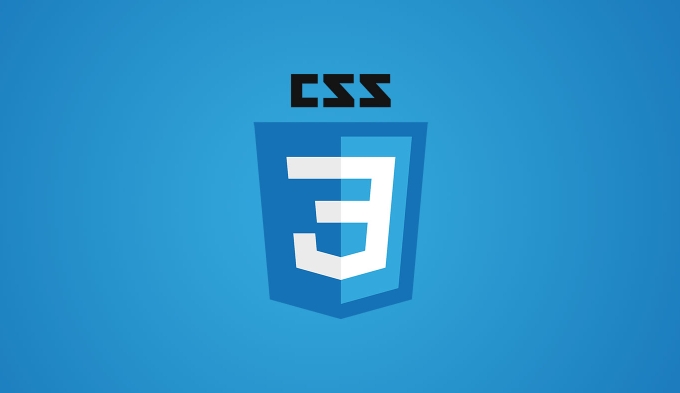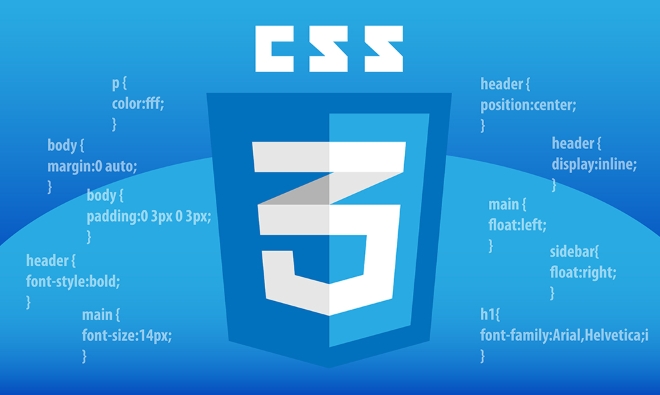To achieve CSS element overlap, you need to use positioning and z-index to control the casing order. 1. Use position: relative, absolute or fixed to remove elements from normal document flow and position them; 2. Set the stacking level through the z-index attribute, the larger the value, the higher the forward, but only take effect on the positioning elements; 3. Common modes include card layout, corner badges, etc. Note that the parent container may create a new stacking context to affect the effect; 4. Simple overlap can be implemented with negative margins, such as margin-left: -20px for avatar or label stacking. Correctly understand the positioning, stacking context and z-index action mechanism to accurately control the overlapping effect.

Overlapping elements in CSS is a common layout technique used in web design—whether you're stacking images, creating card layouts, or building complex UIs. The key to overlapping lies in positioning and z-index . Here's how to do it properly.

1. Use Positioning to Move Elements
To overlap elements, at least one of them needs to be taken out of the normal document flow using position . The most common approaches:
-
position: relative– shifts an element from its normal position without affecting others. -
position: absolute– positions an element relative to its nearest positioned ancestor. -
position: fixed– positions relative to the viewport (useful for overlays).
Example: Overlap with relative and absolute
<div class="container"> <div class="box red">Box 1</div> <div class="box blue">Box 2</div> </div>
.container {
position: relative; /* Establishes a stacking context */
width: 300px;
height: 200px;
}
.box {
width: 200px;
height: 100px;
position: absolute;
}
.red {
background: red;
top: 20px;
left: 20px;
}
.blue {
background: blue;
top: 60px;
left: 60px;
}In this example, both boxes are positioned absolutely within a relatively positioned container, allowing them to overlap.

2. Control Stacking Order with z-index
The z-index property controls which element appears on top. Higher values appear in front.
.red {
z-index: 1;
}
.blue {
z-index: 2; /* This will appear above .red */
}? Note:
z-indexonly works on positioned elements (ie,relative,absolute,fixed, orsticky).
3. Common Overlapping Patterns
? Overlapping Cards (eg, Image over Text)
.card {
position: relative;
width: 300px;
}
.card-img {
position: absolute;
top: -20px;
right: -20px;
width: 100px;
height: 100px;
z-index: 1;
}This lifts an image slightly over the card body.
? Background Badge or Ribbon
.ribbon {
position: absolute;
top: 0;
right: -30px;
width: 120px;
transform: rotate(45deg);
background: red;
color: white;
text-align: center;
z-index: 2;
}A rotated ribbon overlapping the top corner of a box.
4. Tips & Gotchas
- Always set
positionbefore usingz-index. - Watch out for stacking contexts —nested elements with
z-indexmay not behave as expected if a parent creates its own stacking context (eg, via opacity,transform, orz-index). - Use negative
marginas a simpler alternative for minor overlaps (see below).
Alternative: Overlap with Negative Margin
For simple cases (like inline elements), you don't need positioning:
.overlap {
margin-left: -20px; /* Pulls element back into the previous one */
}Useful for avatar stacks or tags.
Basically, overlapping in CSS comes down to positioning and layering. Use position to move elements, z-index to control who's on top, and negative margin when layout flow allows. It's not complex—just pay attention to context and stacking order.
The above is the detailed content of how to overlap elements in css. For more information, please follow other related articles on the PHP Chinese website!

Hot AI Tools

Undress AI Tool
Undress images for free

Undresser.AI Undress
AI-powered app for creating realistic nude photos

AI Clothes Remover
Online AI tool for removing clothes from photos.

Clothoff.io
AI clothes remover

Video Face Swap
Swap faces in any video effortlessly with our completely free AI face swap tool!

Hot Article

Hot Tools

Notepad++7.3.1
Easy-to-use and free code editor

SublimeText3 Chinese version
Chinese version, very easy to use

Zend Studio 13.0.1
Powerful PHP integrated development environment

Dreamweaver CS6
Visual web development tools

SublimeText3 Mac version
God-level code editing software (SublimeText3)

Hot Topics
 CSS tutorial for creating loading spinners and animations
Jul 07, 2025 am 12:07 AM
CSS tutorial for creating loading spinners and animations
Jul 07, 2025 am 12:07 AM
There are three ways to create a CSS loading rotator: 1. Use the basic rotator of borders to achieve simple animation through HTML and CSS; 2. Use a custom rotator of multiple points to achieve the jump effect through different delay times; 3. Add a rotator in the button and switch classes through JavaScript to display the loading status. Each approach emphasizes the importance of design details such as color, size, accessibility and performance optimization to enhance the user experience.
 Addressing CSS Browser Compatibility issues and prefixes
Jul 07, 2025 am 01:44 AM
Addressing CSS Browser Compatibility issues and prefixes
Jul 07, 2025 am 01:44 AM
To deal with CSS browser compatibility and prefix issues, you need to understand the differences in browser support and use vendor prefixes reasonably. 1. Understand common problems such as Flexbox and Grid support, position:sticky invalid, and animation performance is different; 2. Check CanIuse confirmation feature support status; 3. Correctly use -webkit-, -moz-, -ms-, -o- and other manufacturer prefixes; 4. It is recommended to use Autoprefixer to automatically add prefixes; 5. Install PostCSS and configure browserslist to specify the target browser; 6. Automatically handle compatibility during construction; 7. Modernizr detection features can be used for old projects; 8. No need to pursue consistency of all browsers,
 Styling visited links differently with CSS
Jul 11, 2025 am 03:26 AM
Styling visited links differently with CSS
Jul 11, 2025 am 03:26 AM
Setting the style of links you have visited can improve the user experience, especially in content-intensive websites to help users navigate better. 1. Use CSS's: visited pseudo-class to define the style of the visited link, such as color changes; 2. Note that the browser only allows modification of some attributes due to privacy restrictions; 3. The color selection should be coordinated with the overall style to avoid abruptness; 4. The mobile terminal may not display this effect, and it is recommended to combine it with other visual prompts such as icon auxiliary logos.
 Creating custom shapes with css clip-path
Jul 09, 2025 am 01:29 AM
Creating custom shapes with css clip-path
Jul 09, 2025 am 01:29 AM
Use the clip-path attribute of CSS to crop elements into custom shapes, such as triangles, circular notches, polygons, etc., without relying on pictures or SVGs. Its advantages include: 1. Supports a variety of basic shapes such as circle, ellipse, polygon, etc.; 2. Responsive adjustment and adaptable to mobile terminals; 3. Easy to animation, and can be combined with hover or JavaScript to achieve dynamic effects; 4. It does not affect the layout flow, and only crops the display area. Common usages are such as circular clip-path:circle (50pxatcenter) and triangle clip-path:polygon (50%0%, 100 0%, 0 0%). Notice
 What is the difference between display: inline, display: block, and display: inline-block?
Jul 11, 2025 am 03:25 AM
What is the difference between display: inline, display: block, and display: inline-block?
Jul 11, 2025 am 03:25 AM
Themaindifferencesbetweendisplay:inline,block,andinline-blockinHTML/CSSarelayoutbehavior,spaceusage,andstylingcontrol.1.Inlineelementsflowwithtext,don’tstartonnewlines,ignorewidth/height,andonlyapplyhorizontalpadding/margins—idealforinlinetextstyling
 How to create responsive images using CSS?
Jul 15, 2025 am 01:10 AM
How to create responsive images using CSS?
Jul 15, 2025 am 01:10 AM
To create responsive images using CSS, it can be mainly achieved through the following methods: 1. Use max-width:100% and height:auto to allow the image to adapt to the container width while maintaining the proportion; 2. Use HTML's srcset and sizes attributes to intelligently load the image sources adapted to different screens; 3. Use object-fit and object-position to control image cropping and focus display. Together, these methods ensure that the images are presented clearly and beautifully on different devices.
 What is CSS and what does it stand for?
Jul 03, 2025 am 01:48 AM
What is CSS and what does it stand for?
Jul 03, 2025 am 01:48 AM
CSS,orCascadingStyleSheets,isthepartofwebdevelopmentthatcontrolsawebpage’svisualappearance,includingcolors,fonts,spacing,andlayout.Theterm“cascading”referstohowstylesareprioritized;forexample,inlinestylesoverrideexternalstyles,andspecificselectorslik
 What is the CSS Painting API?
Jul 04, 2025 am 02:16 AM
What is the CSS Painting API?
Jul 04, 2025 am 02:16 AM
TheCSSPaintingAPIenablesdynamicimagegenerationinCSSusingJavaScript.1.DeveloperscreateaPaintWorkletclasswithapaint()method.2.TheyregisteritviaregisterPaint().3.ThecustompaintfunctionisthenusedinCSSpropertieslikebackground-image.Thisallowsfordynamicvis







